I photographed some "mountain midge" larvae, Deuterophlebia, in Hyalite Creek outside of Bozeman in southwestern Montana in mid-August, 2006. The larvae of Deuterophlebia are less than 6mm long, and here is where the OM 38/2.8 macro lens absolutely shines. Using this lens on the OM bellows, with two T32 flashes and the OM4T camera body, all in a home-made housing, I was able to follow a larva as it grazed across a white rock.
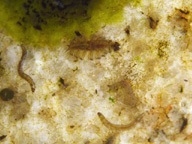
The bellows is here at its minimum length. The Deuterophlebia larva is near the top of the photo, just below a large colony of algae. Four Chironomidae larvae are also visible (one is all but hidden in a case (of silk?) to the lower right of the Deuterophlebia larva).
Extending the bellows to 1/2 its length closes in on the larva (photo below left).

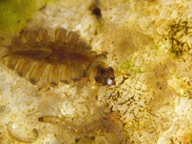
Extending the bellows to its full length closes in even more (above, right). Note how the chironomid larva below the Deuterophlebia has partly emerged from its opaque (silk?) case. Its head approaches the head of another chironomid larva.
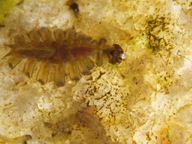
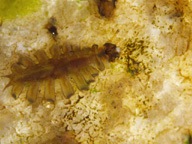
As the Deuterophlebia moves forward, the chironomid larva retreats back into its case (above, left), possibly disturbed by the other approaching chironomid larva. Grazing on, the Deuterophlebia approaches a small, diffuse bit of algae (photo above, right). Note how fairly evenly the rear four of the seven prolegs on the larva's right side are spaced, but how close the front three are.
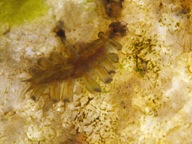
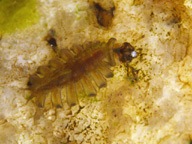
The pair of photos above show the head in its constant side-to-side motion. This is what one notices most while watching the larva graze--the head is constantly moving back and forth. Forward motion is accomplished by a sort of "wave" of moving the prolegs--compare the positions of the prolegs on the right side in the two shots above.
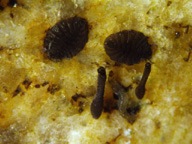
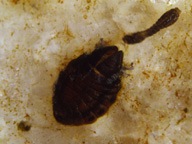
The very dark pupae of Deuterophlebia are easily seen against the white rock. The pupa to the right has had the adult emerge.
Larger examples of these photos are available on "Deuterophlebia larvae".
.